
| Commissions |
| Artists' Studios |
| Spotlight |
| Events |
| zellen | crouse/lambert/mahon | networked | croft | ecoarttech | dubois | rothenberg |
| varnelis | helmond | freeman | munster | lichty | filardi |
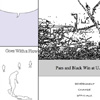
by Jody Zellen
with funds from the Jerome Foundation
In July 2007, Jody Zellen began saving the daily online version of the comic strip Real Life Adventures, removing the text so that all that was left were the empty thought bubbles. She has also been tracing the print version of the New York Times every day, often combining the front and back of a single page (by holding it up to a window). Without A Trace takes the idea of this daily ritual as its point of departure. Each day for a year, a comic image, a trace drawing, and three words from the original comic strip will be randomly selected from an archive. These are juxtaposed with live text and image feeds from the New York Times online. A trace is an action. A trace is what remains when almost everything else disappears. Without A Trace draws from an archive of traces, presenting them with ephemeral data to provide a fleeting memory, challenging the title and the notion, without a trace.
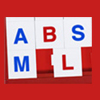
by Jeff Crouse, Andrew Mahon, and Steve Lambebt
with funds from the Jerome Foundation
ABSML is a new markup language that enables the creation of complex sentence formulas for 21st century automatic writing. ABSML tags replace parts of speech and sentence components using sophisticated semantic analysis, regular expressions, and web-based resources. In the right combination, the tags create prose that – while based on formulas and code – do not appear formulaic. ABSML is free and open for others to use, both through an online editor and an API (application programming interface).

with funds from the National Endowment for the Arts
We are pleased to announce the launch of Networked: a (networked_book) about (networked_art) which is now open for revision, commentary, and translation. After and international competition, five chapters were commissioned: Storage in Collaborative Networked Art by Jason Freeman; Lifetracing: The Traces of a Networked Life by Anne Helmond; Data Undermining: The Work of Networked Art in an Age of Imperceptibility by Anna Munster; Art in the Age of DataFlow: Narrative, Authorship, and Indeterminacy by Patrick Lichty; and The Immediated Now: Network Culture and the Poetics of Reality by Kazys Varnelis. Five additonal chapters have been added; No End In Sight: Networked Art as a Participatory Form of Storytelling by Marco Deseriis; The Learning Screen by Greg Ulmer; Remix and the Rouelles of Media Production by Owen Gallagher, Mette Birk, Mark O' Cúlár, Martin Leduc, Eduardo Navas, and Tara Zepell; Re-Locating by Yasmin Abbas; and In Production (A Narrative Inquiry on Interactive Art) by Nathaniel Stern.

by Christian Croft
with funds from New York City Department of Cultural Affairs
Yeas and Nays is a browser plug-in that transforms any webpage into a means for contacting Congressional representatives. It is the latest functionality added to Shiftspace.org, an application that provides an open source layer above any website. Yeas and Nays is a powerful tool that translates knowledge into action. By invoking the Yeas and Nays interface – which calls elected representatives – readers can respond immediately to the issues they care about. Their phone calls are recorded so that others can learn to articulate their views effectively. Yeas and Nays was awarded first place in the The ShiftSpace Commissions Program, a 2007 commission of New Radio and Performing Arts, Inc., (aka Ether-Ore) for its Turbulence web site. [Needs Firefox Browser and ShiftSpace Download]
Awarded Third Place Sunlight Foundation Apps for America
By EcoArtTech
With funds from The Murray G. and Beatrice H. Sherman Charitable Trust
Eclipse is a user driven, networked-art application that alters and corrupts United States national and state park images from Flickr.com based on the real-time Air Quality Index (particle pollution data) provided by the United States Environmental Protection Agency (E.P.A.) at the site www.airnow.gov.
Read a review >>
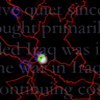
by R. Luke DuBois
with funds from New York City Department of Cultural Affairs
Hard Data is a data-mining, sonification, and visualization project that uses statistics from the American military actions in Afghanistan and Iraq as source material for an interactive audiovisual composition based around an open-source "score" of events. Using Xenakis' understanding of formalized music as a starting point, DuBois draws upon a variety of statistical data ranging from the visceral (civilian deaths, geospatial renderings of military actions) to the mundane (fiscal year budgets for the war) to generate a dataset that can be used for any number of audiovisual compositions. The intention of the project is to recontextualize the formal stochastic music in the context of real-world statistics, and to provide a compositional and metaphoric framework for creating an electroacoustic music relevant and significant to our time. [Needs Flash plugin and speakers; wait for data to load]
Read a review >>
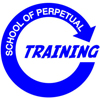
by Stephanie Rothenberg
with funds from New York City Department of Cultural Affairs
School of Perpetual Training, an ironic edutainment website, exposes the underbelly and not so glamorous side of the computer video game industry. An animated personal trainer leads eager job seekers through a series of webcam-enabled training exercises for outsourced jobs in digital game manufacturing and global distribution. Classic arcade games such as Dig Dug and Space Invaders are redesigned to train job seekers for positions in mineral mining and printed circuit board assembly. Pushing joystick and mouse aside, the webcam interface utilizes motion detection requiring full range of body motion to play. Through the relationship of physical labor for virtual gain, the reality of the actual physical, labor critical to running virtual worlds is made visible. [Needs webcam and speakers]
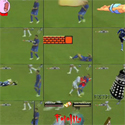
by Kazys Varnelis
with funds from the National Endowment for the Arts
ABSTRACT: Network culture is not limited to digital technology or to the Internet but rather is a broad sociocultural shift. Under network culture both art and everyday life take mediation as a given. Life becomes performance, taking place in a culture of exposure in exchange for self-affirming feedback from the net. This chapter explores the role of this poetics of the real in cultural production from YouTube to the gallery. The new poetics of reality is not the traditional realism. Earlier codes are replaced by immediacy, self-exposure, performance, and remix.

by Anne Helmond
with funds from the National Endowment for the Arts
ABSTRACT: This chapter deals with the change of identity on the web as a result of the assemblage of social software platforms, engines and users. It can be stated that major platforms for presenting the self online have developed over time: the homepage, the blog, the social networking profile and the lifestream. They each have their own specific way for presenting the self online. The advent of the search engine has had a major impact on both the construction and the presentation of the online identity. Search engines not only index the platforms on which identity is performed, but they also organize and construct identity online. They act as a central point where identity performance is indexed. Since identity construction and identity performance have significantly changed with the advent of these engines, identity must be reconsidered. It can be argued that the assembly of platform, engine and user has constructed a new type of identity: Identity 2.0. This type of identity, placed within the period of Web 2.0, is always under construction, never finished, networked, user-generated, distributed and persistent.

by Jason Freeman
ABSTRACT: This chapter explores the role of storage in media art and, more specifically, its role in collaborative creativity within the field of networked music. Through a series of paired analyses of works that differentially emphasize transmission and storage or which employ different approaches to storage, the chapter discusses different opportunities, challenges, and issues related to storage in collaborative, networked art. Music by the Rova Saxophone Quartet and by Nick Collins frames a discussion of composition and improvisation; two works by The Hub initiate an analysis of the influence of technology on network design and on collaborative models of shared material and shared control; broadcast works by Max Neuhaus introduce the concept of active storage systems; the online sites WebDrum and Jamglue raise questions about network latency and the persistency of storage; and Bicycle Built for 2,000 and Graph Theory manipulate the level of awareness of storage mechanisms by various participants.
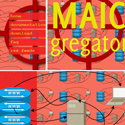
by Anna Munster
with funds from the National Endowment for the Arts
ABSTRACT: The large quantities of data now being generated via networked communications are also being managed, regulated and interpreted into patterns that are comprehensible to humans. The management of data is undertaken by sophisticated sampling, tracking and automated techniques and the results of these are frequently sequestered to become the property of corporations and institutions such as Google or the US military. Even when data flows "freely" through the net, the operations of search engines, databases, digests and feeds such as RSS increasingly makes this manipulation of data invisible. Techniques such as aggregation smooth out the differentials of data's constitution and present us instead with a flattened landscape of information. The sources, processes and contexts, which make information meaningful, are rendered imperceptible. How have networked artistic practices responded to this emerging terrain of the imperceptible conditions for the generation of data? This chapter will examine the work of online and offline networked art practices that seek to undermine the broader flow of data toward a general cultural state of imperceptibility.
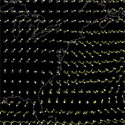
by Patrick Lichty
with funds from the National Endowment for the Arts
ABSTRACT: How to write a chapter that ostensibly has no end? Who is the author when anyone can edit? Does dialogue occur on listerves and blogs? How do we make meaning of trends? I look at the emergence of nonlinear narrative (1940-2006), using the mathematical terms scalar, vector and flow as conceptual or visual metaphors that describe structure, transmission, and social patterns. Scalar examines the set, non-linear narratives of hypermedia and the indeterminate narratives of Wikis; vector, the dialogic narratives of listserves and blogs; and artistic visualizations that seek to reveal patterns as flows of information in networked cultures increase. These modes of representation, and the artists who exemplify them in this chapter, illustrate the transition from linear to non-linear narrative, the emergence of indeterminate notions of authorship and readership, and the problematic nature of communication and representation in open networks. Consideration is given to pioneers of interactive and networked systems, Vannevar Bush and Douglas Engelbart, without whom contemporary hypermedia would not exist.

by Liz Filardi
with funds from the Jerome Foundation
A record of telephone interactions is gathered under the pretense of a social networking service called Status Grabber, in which a representative makes personal phone calls to request very short "status updates" from strangers. Call recipients are told that someone they know has anonymously requested a "status update" about them, and that they should provide the representative with an open statement about their career, family, social life, or literal whereabouts. The service mimics the social activity of users on Facebook and Twitter, where users stay connected without directly interacting. In creating an analog version of those services, Status Grabber places analogous pressure on individuals to relinquish privacy in order to participate in this new model of socialization. Status Grabber is part of a project called I'm Not Stalking You; I'm Socializing, in which the artist explores how social networking changes the ways in which we relate to one another and enrich our lives. Visitors to the website can directly request status updates through the satirical service, listen to phone records, and view rolling, one-line status updates.
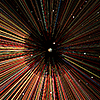
by Michael Takeo Magruder
with Drew Baker and David Steele
The televised broadcast of the Berlin Olympics in 1936 was humanity’s first media transmission powerful enough to pass through Earth’s ionosphere and travel into deep space. From that point in time our signals have radiated into the universe, creating an ever-expanding globe referred to as Earth’s Radiosphere. In the 73 years since that defining moment, our communications have reached nearly two thousand other known star systems. Data_Sea is a real-time virtual environment based upon this relationship between broadcast media and astronomy. The core geometry of the artwork is derived from the actual positions of all catalogued star systems residing within the Radiosphere. Live media from the BBC world news service is streamed into the environment. The virtual elements are textured with images from today’s events, while layers of live audiocasts are blended into a persistent soundscape. These mediated reflections of the present are in constant flux, forever shifting as they drift into an endless sea of virtual space. [Needs Windows 2000/XP/Vista computer system with Internet Explorer or Firefox, the Cortona3D Viewer 6, Adobe Flash 10 and Windows Media Player 11 plugins, and 5.1 or stereo audio]
Data_Sea is installed at Thinktank: Birmingham Science Museum in both the Planetarium and Futures Gallery until June 30, 2009.
Alan Bigelow writes digital stories for the web. Created in Flash, they are multimedia environments (text, image, audio, video, and other elements) in which his narratives can unfold, and in which users can interact and sometimes participate. His updated Turbulence Artist's Studio page includes eight new works, dating back to 2007. Two of these — Science For Idiots and Deep Philosophical Questions — are part of the "brainstrips" series, which use comic strip forms to create fresh and engaging perspectives on science and philosophy. Other works — My Summer Vacation, What They Said, When I Was President, and Lord's Prayer — provide complex commentaries on politics, family, and religion. Lastly, Bigelow returns to user-generated database entries through works like I-Pledge.org, which offers visitors an opportunity to rewrite the Pledge of Allegiance, and Love Is..., a tentative definition of love. [Needs Flash Player]
by Doug Gast
30 Days of New Life comprises a series of performances in which a team of cartographers relocates to a new city for 30 days. The first performance took place in 2008 in Berlin, Germany; the second will occur summer 2009. During the performances, the cartographers work with local residents to identify places and people that are personally, artistically, historically or culturally significant. Essentially, the performances result in an online interactive map. The map is created using Google Maps and the project's website. Each point of interest includes a description, information gathered from local residents/sources, reflections, images, and/or video. The cartographers do not control what gets included in the map. Local residents make suggestions and it is their suggestions that ultimately build it.
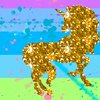
by Scarlet Electric
MrsCoryArcangel.com – part fansite, part cultural critique, part exercise in stalking – is a website devoted to Cory Arcangel. Featuring animated gifs, collage, and textured backgrounds, MrsCoryArcangel.com embraces an aesthetic deemed by Arcangel as "dirt style." Dirt style, as Arcangel defines it, is the "true spirit of the web." The site includes interpretations of Arcangel's projects-instead of endless SuperMario clouds, Princess Toadstool endlessly waiting for Mario. Instead of Number of the Beast compressed 666, the song 500 Miles by the Proclaimers compressed 500 times.
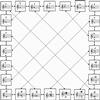
by Jason Freeman, with Akito Van Troyer and Jenny Lin
Inspired by the tradition of open-form musical scores, Piano Etudes is a set of four short works, each of which is notated as a collection of short musical fragments with links to connect them. In performance, the pianist must use those links to jump from fragment to fragment, creating her own unique version of the composition. The pianist, though, should not have all the fun. So an accompanying web site enables anyone to create their own version of each etude, download it as an audio file or a printable score, and share it with others. In concert, pianists may make up their own version of each etude, or they may select a version created by a web visitor. [Needs Adobe Flash Player plugin; Internet Explorer 6+, Firefox 2+, Safari 2+, or any recent web browser]
by Martha Gabriel
Sensitive Rose is an interactive, navigable compass formed by mobile tags (QRcodes). To interact with Sensitive Rose one has to access the work via a mobile device. Once there, the user must choose what he/she wants from life. On the web Sensitive Rose maps the desire next to the tag related to it, and generates a new QRcode for that user. The desire – for instance, "Joe wants Love" – is added to the compass rose which evolves with each new contribution. Users can decipher one another’s desires by decoding the poetry hidden within these tags. [Needs mobile device with camera and QRcode reader]
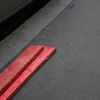
by Jorn Ebner
(sans femme et sans aviateur) is a browser-based work that was inspired by Eric Rohmer’s film The Aviator’s Wife. It depicts contemporary Paris, happened upon following the main locations of the movie. The photographic imagery and the audio material were recorded during walks, and bus and metro rides, in a manner similar to the Nouvelle Vague film maker -- although without any pre-arrangements for settings and observations; and with repeated visits to the locations. “My intention was to honour Rohmer’s powers to get me interested in Paris, and at the same time make a work that discovers the city, even if only for myself … The work was also made with (the) intention to use the browser as a presentation tool that is independent of user interaction.” – Jorn Ebner [Allow Pop-ups; Firefox users read instructions]
Read a review >>
by Nicholas Knouf
MAICgregator is a Firefox extension that aggregates information about colleges and universities embedded in the military-academic-industrial complex (MAIC). It searches government funding databases, private news sources, private press releases, and public information about trustees to try and produce a radical cartography of the modern university via the replacement or overlay of this information on academic websites. This is a necessary activity in light of the contemporary financial “crisis”. [Needs Firefox browser and extention download]
by Annette Weintraub
One Text, Many Stories is an exploration of reading, and of how the visual context and process of reading influences interpretation. An original text composed of nine short passages describes an urban space reconstituted in memory, and is interspersed with short extracts from Michael de Certeau's The Practice of Everyday Life and The Production of Space by Henri Lefebre. Taken together, the passages are a construction of 'the city' as a fluid mental map of elements that are shuffled and rearranged. Inspired by the css Zen Garden use of CSS to separate structure and appearance, each page redisplays and reconfigures the primary text. Through this alteration, the text undergoes shifts in meaning and narrative arc. [Needs: Reset the zoom on your browser to 100% and turn off text zoom. Optimum browsers for this project are Firefox 3.xx, Safari 4, Google Chrome 3 and Internet Explorer 8. ]
Upgrade! Boston is a monthly gathering of new media artists and curators that fosters dialogue and creates opportunities for collaboration within the media art community. At each meeting one or two artists/curators present work in progress and participate in a discussion. Upgrade! Boston is hosted by the Center for Advanced Visual Studies at MIT and is a node in the Upgrade! International network.
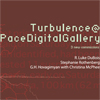
with funds from the New York City Department of Cultural Affairs
and Pace Digital Gallery
Three works commissioned by Turbulence.org: Hard Data by R. Luke DuBois; School of Perpetual Training by Stephanie Rothenberg; and Plazaville by G.H. Hovagimyan, with Christine McPhee.
April 7 - May 1, 2009
Opening Reception: April 7, 5:00 - 7:00 pm
Pace Digital Gallery, 163 William Street, New York City
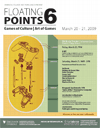
March 20-21, 2009
Bordy Theater, Emerson College Boston
with funds from Emerson College
Video games extend beyond the gaming console into nearly every aspect of contemporary life. They are fun. They drive innovation, consumer engagement and employee productivity. Is our culture turning everything into a game? Video Games have had a greater impact on narrative form than any medium since film. They are altering our experience of both virtual and physical space. Gamespace is everywhere and nowhere (McKenzie Wark, Gamer Theory). In Video Game Spaces: Image, Play, and Structure in 3D Worlds, Michael Nitsche introduces five analytical layers — rule-based space, mediated space, fictional space, play space, and social space. How do artists and game designers use these spaces in their creative practice? How does structured play impact our engagement with other people, both online and in urban space? What are the political and cultural implications of gaming practices? Presentations and workshops by Asi Burak, Anita Fontaine, Jesper Juul, Friedrich Kirschner, Marcin Ramocki, Jason Rohrer, Adriana de Souza Silva, and Mushon Zer-Aviv.
